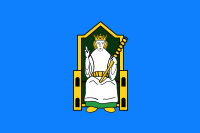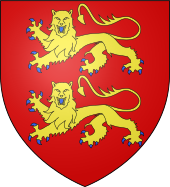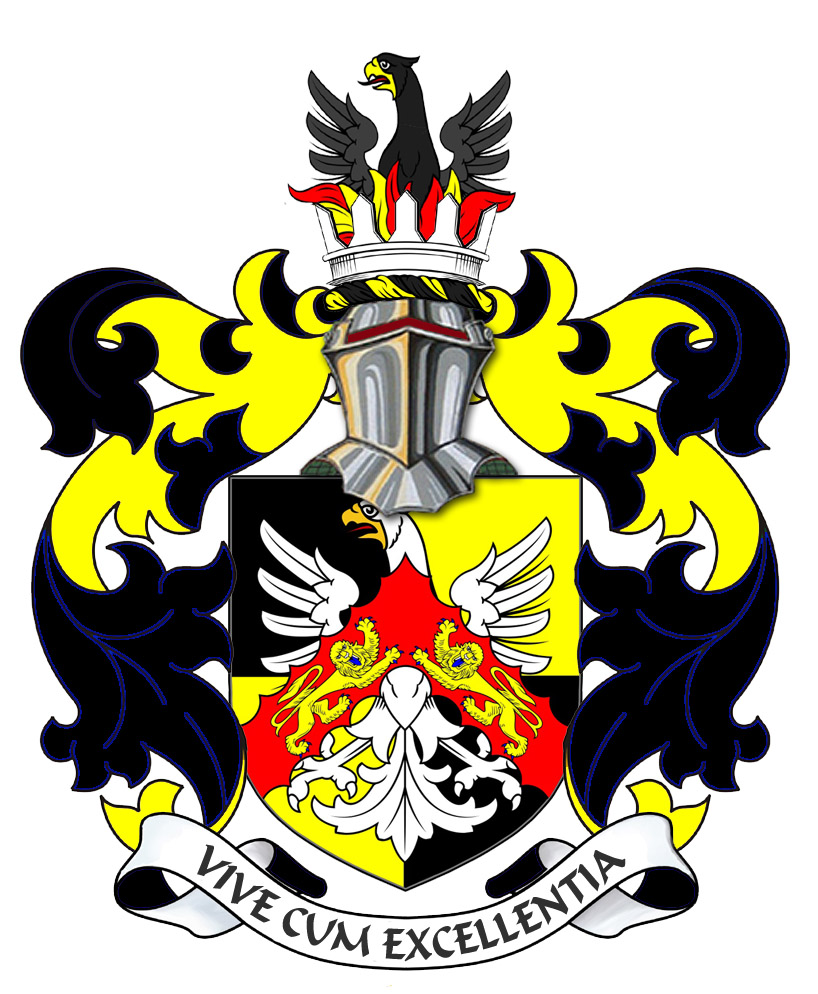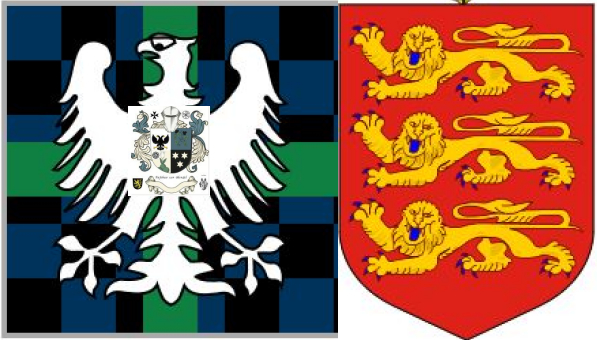Baron Longford Baron Annaly - Feudal Barons




| ||||

Meath about the year 900
|
|
| Today part of | Republic of Ireland |
|---|---|
Following the Norman invasion of Ireland , in 1172 the kingdom was awarded to Hugh de Lacy as the Lordship of Meath by Henry II of England in his capacity as Lord of Ireland .
* Teffia: Another great division of ancient Meath was called Teabhtha, Latinized "Teffia, which comprised the present County Westmeath, with parts of Longford and the King's County ; and was the territory of Main, son of Niall of the Nine Hostages. It was divided into North and South Teffia. North Teffia or Cairbre Gabhra (or Gaura) was that portion of Annaly or the County Longford, about Granard; and South Teffia comprised the remaining portions of Annaly and Westmeath.
The Four Tribes of Tara: "The Four Tribes of Tara, according to the Battle of ' Magh Rath' [Moira], page 9, where
those tribes are mentioned, were the families of O'h-Airt [O'Hart] ; O'Ceallaigh [O'Kelly], of Breach or Bregia;
O'Conghaile (considered to be O'Connolly) j and O'Riagain [O'Regan]. —Book of Rights.
Bregia:
The great plain of Meath, which included the greater parts of the present Counties of Meath and Dublin was known
by the name of Magh Breagh {magh breagh : Irish, the magnificent plain), signifying the Plain of Magnificence. It
was Latinized "Bregia," and by O'Connor called Campus Urigantium or the " Plain of the Brieantes," from its being
possessed by the Brigantcsor Clan-na-Breoghan, as the descendants of Breoghan (No. 34. page 53), were called. That
plain, situated in the eastern part of the ancient kingdom of Meath, comprised five triocha-cheds or baronies, and
included Fingal, a territory lying along the coast between Dublin and Drogheda. This territory was so called
because of a colony of Norwegians, who settled there in the tenth century, and who were called by the Irish Fionn
Ghaill, or "Fair-haired Foreigners": hence the term 'Fingal." which was applied to the Norwegians; while Dubh
Ghaill or " Black Foreigners" was the term applied to the Danes.
According to Conncll.Ws Four Masters, Bregia, which was a portion of the territory possessed by the princes of
Tara, presents vast plains of unbounded fertility: containing about half a million of acres of the finest lands in
Ireland.
PRINCIPAL FAMILIES OF ANCIENT MEATH.
Irish Pedigrees, Or, The Origin and Stem of the Irish Nation
By John O'Hart
https://books.google.com/books?pg=PA555&lpg=PA555&dq=o%27Fionnallain+territory&sig=ACfU3U0Hxaj-GmE1s2lrX_GjWUl2tJn6qg&id=STYbAAAAYAAJ&ots=JM0UfgQxeG&output=text
The Kingdom of Meath included Bregia and Teffia. The chiefs and clans of the Kingdom of Meath, and the
territories they possessed, are as follows: I. O'Melaghlin, kings of Meath. Of this family Murcha was the king of
Meath at the time of the Anglo-Norman invasion ; whose Kingdom was granted by King Henry the Second to Hugh de
Lacey. 2. •
O'h-Airt or O'Hart were princes of Tara ; and when, on the Anglo-Norman invasion of Ireland, they were dispossessed
of their territories in Bregia or the eastern portion of the Kingdom of Meath, they were lords in Teffia* or the
western portion of that ancient Kingdom. Connellan styles O'Regan, O'Kelly, and O'Connolly, princes of Tara ; and
O'Donovan states that they were of the four families who, by pre-eminence, were known as the " Four Tribes of
Tara."t The princes of Tara were also styled princes of Bregia,} a territory which extended between the Liffey and
Boyne, from Dublin to Drogheda, thence to Kells; and contained the districts about Tara, Trim, Navan, Athboy,
Dunboyne, Maynooth, Lucan, etc,: the territory comprising these districts and that part of the present County
Dublin, north of the river Liffey, was known as " O'Hart's Country." O'Kelly of Bregia were chiefs of Tuath Leighe,
parts of the baronies of West Narragh and Kilkea, in the County Kildare; they had also the district about Naas, and
had their chief residence and castle at Bathascul or the Moat of Ascul, near Athy: the territory comprising these
districts was known as "O'Kelly's Country." These O'Kellys are distinct from the O'Kellys of Clan Colla, who were
princes of Hy-Maine, a territory in Galway and Roscommon. O'Regan were chiefs of Hy-Riagain, now the barony of
Tinehinch in the Queen's County. 3. O'Connolly, respectable families in Meath, Dublin, and Kildare; were chiefs in
the County Kildare. 4.
O'Ruadhri or O'Rory, now Rogers, lord of Fionn Fochla in Bregia. 5. O'Fallamhain or Fallon, lord of
Crioch-na-gCeadach: so called from Olioll Cedach, son of Cahir Mor, King of LeinBter, and the 109th Monarch of
Ireland. The " Country of the O'Fallons" was near Athlone, in the County Westmeath, but they were afterwards driven
across the Shannon into Roscommon. 6. O'Coindeal-bhain (O'Kendellan, or O'Connellan), princes of Ibh-Laoghaire or
"Ive-Leary," an extensive territory in the present Counties of Meath and Westmeath, which was possessed by the
descendants of Leary, Monarch of Ireland at the time of St. Patrick. The parish of Castletown Kendellan in
Westmeath shows one part of this ancient territory, and the townland of Kendellanstown, near Navan, shows another
part of it. 7. O'Braoin or O'Breen, chief of Luighne, now the parish of "Leney," in the barony of Corcaree,
Westmeath. 8. O'h-Aongusa or O'Hennessy, chief of Hy-Mac-Uais, now the barony of "Moygoish," in Westmeath. The
Clan-Mac-Uais or MacEvoy, sometimes called MacVeagh and MacVeigh, of the race of Clan Colla, were the original
chiefs of this territory. 9. O'h-Aodha (anglicised O'Hughes and O'Hayes), chief of Odhbha (probably " Odra" or
"Oddor," in the barony of Skrine, near Tara). 10. O'Dubhain or Duane, chief of Cnodhbha, probably "Knowth," near
Slane. 11. O'h-Ainbeath or O'Hanvey, chief of Fearbhile, now the barony of "Farbill," in Westmeath. 12.
O'Cathasaigh or O'Casey, chief of Saithne, now " Sonagh," in Westmeath, where one of the castles of De Lacey stood,
who conferred that property on the Tuite family. 18. O'Lochain or O'Loughan, chief of Gailenga, now the parish of
"Gallen" in the barony of Garrycastle, King's County. 14. O'Donchadha or O'Donoghoe, chief of Teallach Modharain,
probably now "Tullamore," in the King's County. 16. O'Hionradhain, chief of Corcaraidhe, now the barony of "
Corcaree," in Westmeath. 16. O'Maolmuaidh or O'Molloy, Prince of Ferceall, comprising the present baronies of
Ballycowen, Ballyboy, and Eglish or "Fercall," in the King's County. 17. CDubhlaidhe or O'Dooley, chief of
Fertullach, the present barony of "Fertullagh," in Westmeath. 18. O'Fionnallain or O'Fenelan (of the race of Heber,
and tribe of the Dalcassians), lord of Delbhna Mor, now the barony of "Delvin," in Westmeath. 19. 0 Alaollugach,
chief of Brogha, part of the now baronies of Delvin and Farbill. 20. MacCochlain or MacCoghlan (of the
Dalcassians), lord of Dealbhna-Eathra, now the barony of Garrycastle, in the King's County. 21. O'Tolairgor O'Toler
andO'Tyler, chief of Cuircne (cuircne: Irish, the progeny of Cuirc, anglicised "Quirk"), now the barony of Kilkenny
West, in Westmeath. 22. MacEoghagain or MacGeoghagan, Prince of Cineal Fiacha, now the barony of Moycashel, with
parts of Rathconrath and Fertullagh. The MacGeoghagans were one of the principal branches of the Clan Colman, and
were called Cineal Fiacha, from one of the sons of Niall of the Nine Hostages. 28. MacRuairo or MacRourke, chief of
Aicme-Enda, descended from Enna Finn, another son of Niall of the Nine Hostages. This Clan was located in the
district in which is situated the Hill of Uisneach, in the barony of Rathconrath, in Westmeath. 24. O'Cairbre or
O'Carbery, chief of Tuath Uinn. 25. O'Heochadha (O'Heoghey.O'Hoey, O'Howe, etc.), chief of Cineal Aengusa. 26.
O'Maelcolain or O'Mellon, chief of Delvin Beg or Little Delvin adjoining the barony of Delvin.
Book of Rights
PRINTED FOR THE CELTIC SOCIETY.
1847.
https://archive.org/stream/bookofrights00odon/bookofrights00odon_djvu.txt
Dealbhna Mor, now called the barony of lishment of surnames, O'Fionnallain was
" Delvin," in the comity of Westmeath ; the chief of Dealbhna Mor; O'Maeil-chal-
Dealbhna Beag, now called the barony of lainn (Mulholland), of Dealbhna Beag;
" Demi Fore," in the same comity ; Dealbh- Mac Cochlain (Mac Cognlan), of Dealbh-
na Eathra, now called the barony of " Gar- na Eathra; and O'Scolaidbe (Scully), of
rycastle" in the King's Co., and Dealbhna Dealbhna Teannmuigh, which wasotherwise
Teannmuigh, whichwas a part ofTeathbha, called Dealbhna larthair, or western Dealbh-
i lie exact situation of which has not been na. See O'Dubhagain's topographical poem,
yef determined. See O'Flaherty's Ogygia, in which this last-mentioned territory is
part iii. c. 82, and D Mac Firbisigh'a ge- placed in the country ofTeathbha."
uealogical work (Marquis of Drogheda's ' Bard. — This word, among the ancient
copy), pp. 57, 345. See page 105, note y, Irish, meant an inferior poet or rhymer.
supra, for the tribes of this name seated in The < »llamb fileadh was a man of far higher
the province of Connacht. After the estab- distinction.
Lords Paramount Ireland About Longford Market & Fair Chief Captain Kings Forces Lord of the Pale Commissioners of the Peace Tenures Abolition Act 1662 - Rights to Sit in Parliament Law of Ireland Chief and Captainship of The Annaly List of Townlands of Longford Annaly The Seigneur English Pale Chief of the Annaly Lord of St. Brigit's Longford Abbey Est. 1578 Kings of Hy Niall Colmanians Seneschal of Meath Court Barons News Irish Kingdoms Lordships of Granard Fishing & Dams Rights Rights of Lords & Barons Datuk Seri Baliwick of Ennerdale Moneylagen Feudal Barons Styles and Dignities Lord Baron Longford Baron de Delvyn Longford Map Lord Baron of Delvin Baron of Temple-Michael Baron of Annaly Kingdom Annaly Lord Conmaicne Baron Annaly Order of Saint Patrick Baron Lerha Granard Baron AbbeyLara Baronies of Longford Princes of Conmhaícne Angaile or Muintir Angaile Baron Lisnanagh or Lissaghanedan Baron Moyashel Moiety of Ardagh Baron Rathline Abbeys of Longford Grants to Delvin Baron Inchcleraun HOLY ISLAND Quaker Island Longoford CO Abbey of All Saints Hereditaments Kingdom of Uí Maine Baron Dungannon Baron Monilagan - Babington Lord Liserdawle Castle Baron Columbkille Kingdom of Breifne or Breny Baron Kilthorne Baron Granarde Count of Killasonna Baron Skryne Baron Cairbre-Gabhra AbbeyShrule Fiefs of the Islands Feudal Westmeath The Island Lords Fief Worship Channel Island History Fief Blondel Fief Blondel Merchandise Events Blondel and King Richard Fief Coin Feudal Guernsey Titles The Feudal System Flag & Arms Castle Site Map Disclaimer Blondel Myth Dictionary Honorable Colonel Mentz Order of St. Columba
www.BaronLongford.com * www.FiefBlondel.com




Commissioner George Mentz - George
Mentz Law Professor - George
Mentz Economist
George Mentz News -
George Mentz Illuminati Historian -
George Mentz Net Worth
The Globe and Mail George Mentz
Get Certifications in Finance and Banking to Have Career Growth | AP News